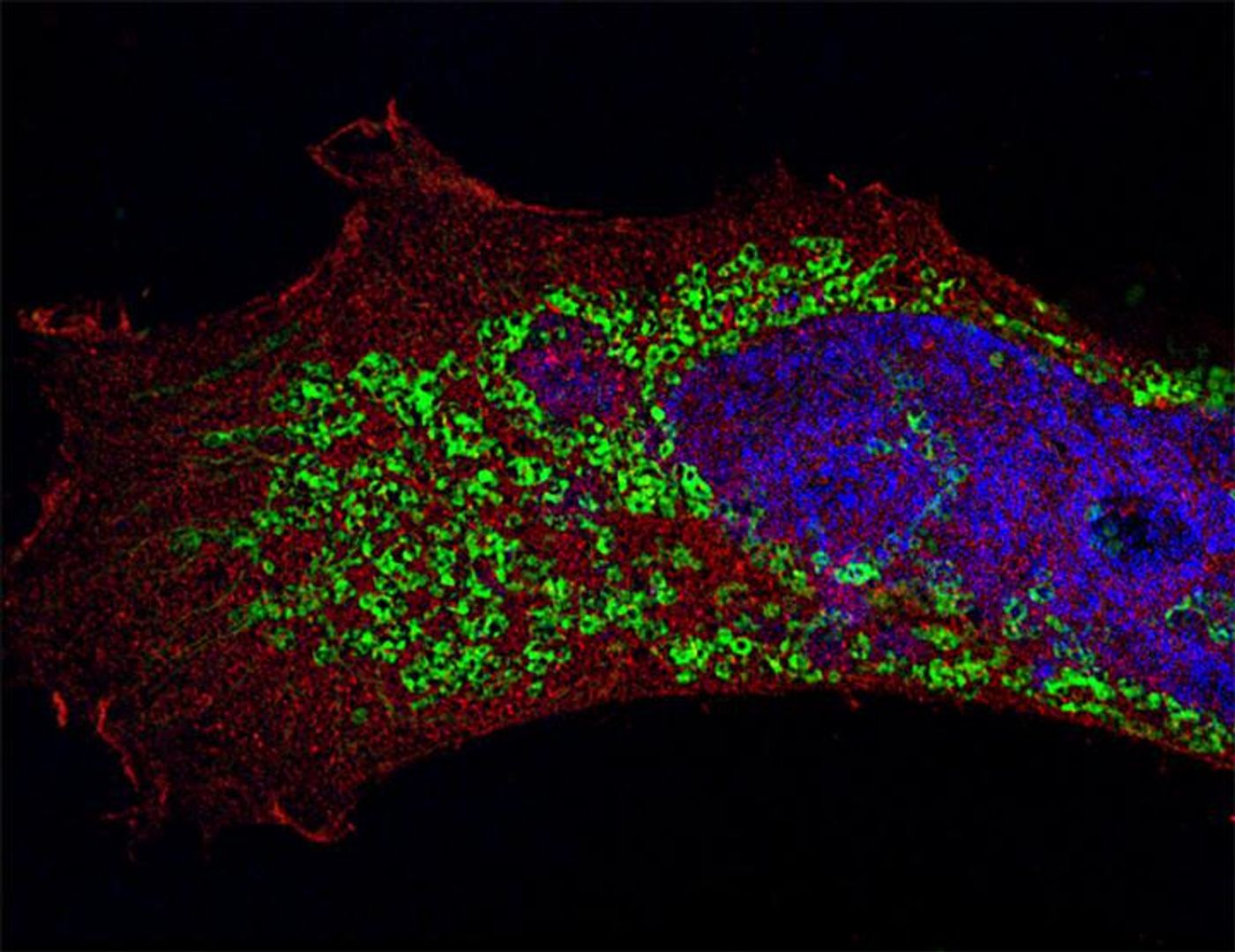Durability of "Immune Checkpoint" Proves Vital for Antiviral Response
Thanks to the innate immune response, humans have an immediately-acting defense mechanism set in place against invading pathogens. The innate response is nonspecific; it employs the same tools to target a wide variety of incoming pathogens.
However, a careful balance must be kept between a too-strong and too-weak response; too weak and the pathogen is one step closer to invading the body. Too strong, and the immune response could do more harm than good, potentially even resulting in autoimmune disease.
The role of a protein called K-homology splicing regulatory protein (KHSRP) is to inhibit the innate immune response to prevent a too-strong response, and it achieves this goal by binding to another innate immune protein called retinoic acid-inducible gene I (RIG-I). However, KHSRP and RIG-I interaction can backfire, weakening the immune response to viral RNA.
"RIG-I normally recognizes RNA molecules that arise during viral infections, but it can also mistakenly sense RNA present in normal cells,” explained senior author Sumit Chanda, PhD, from the Sanford Burnham Prebys Medical Discovery Institute. “Without KHSRP, the innate immune response could be erroneously turned on when there's no virus.”
RIG-1 receptors prompt the innate immune system to target viral RNA in the cell’s cytoplasm, triggering the innate antiviral process. This protein also turns on signaling that ultimately leads to the production of interferon, chemical messengers that initiate a domino effect of antiviral responses including the communication of a “warning” signal to nearby cells. Additionally, RIG-1 initiates the adaptive immune response, the second tier of immunity that coordinates specific attacks depending on the type of pathogen involved in the infection.
Chanda’s study involved sifting through libraries of human proteins to find the one that interacted with RIG-I to set the innate immune response in motion. "We found about 240 proteins, but we focused on KHSRP because it was the only one of the 240 that was found to inhibit the very early steps of RIG-I signaling,” explained Stephen Soonthornvacharin, PhD.
“Depleting KHSRP improved immune signaling and reduced viral replication in cell culture and in vivo, suggesting that drugs inhibiting the protein may have therapeutic value,” Chanda explained. Inhibiting KHSRP could be useful when developing antiviral drugs, anticancer therapies, and autoimmune disease treatments.
“Among the 240 RIG-I regulators we identified, 125 appear to activate RIG-I, so finding drugs that inhibit these proteins may be a way to treat autoimmune conditions involving too much interferon, like type 1 diabetes or lupus,” Soonthornvacharin concluded. Chanda, Soonthornvacharin, and the rest of the team are already planning on further investigating the intricate relationship between RIG-I and KHSRP.
Chanda’s study was recently published in the journal Nature Microbiology.









